From Sept. 21 to 27, groups of scientists and engineers from around the globe gathered at NREL’s Solar Radiation Research Laboratory (SRRL) on the top of South Table Mountain in Golden, Colorado, for the 24th NREL Pyrheliometer Comparisons (NPC).
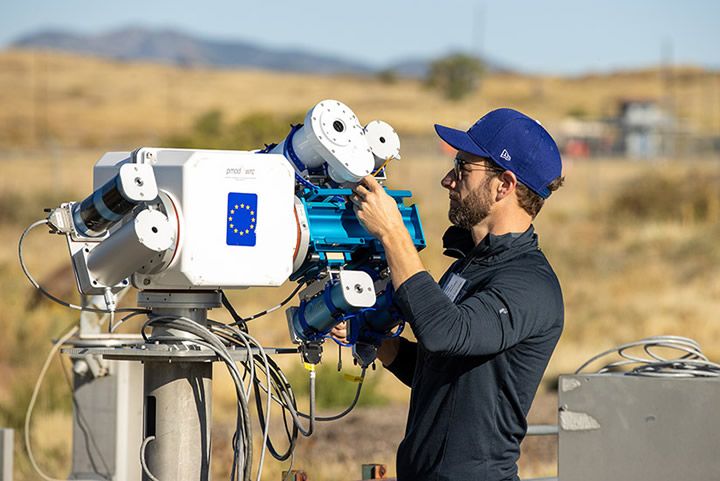 September’s Sunny Skies Make Perfect Day for Solar Calibrations
September’s Sunny Skies Make Perfect Day for Solar Calibrations

Emily Mousel | NREL
Say you are in the market for solar panels for the roof of your home. You are researching the different types, especially noticing the efficiency that they claim. How do you know that you can trust that number?
Or let’s say you want to build an entire solar array. You need a loan from the bank, but they want to know how much energy you think you are going to get from your array to make sure they make a wise investment. How do you know how much energy you are going to get?
The same answer applies to both of these scenarios because what we are talking about is traceability: the ability to trace your measurement back to a standard source that is common to everyone. The person who sold you the solar panels and the bank that agreed to invest in your solar farm both rely on a traceable measurement, and NREL plays a major role in providing just that.
From Sept. 21 to 27, groups of scientists and engineers from around the globe gathered at NREL’s Solar Radiation Research Laboratory (SRRL) on the top of South Table Mountain in Golden, Colorado, for the 24th NREL Pyrheliometer Comparisons (NPC). While Colorado is a destination for many people, NPC’s participants do not just come for the stunning views and the clear skies. As the regional leader, NREL keeps its reference instruments calibrated directly to the World Radiometric Reference and World Infrared Standard Group. Since 1996, NPC has been a gathering place for people from across the globe to calibrate their reference instruments to the world standard.

On the first day of the NPC, participants from Saudi Arabia set up their absolute cavity radiometers (ACRs) in the morning to begin measurements.
Studying Solar Energy Is Part of What Unites Us
One expert in the field, Tom Stoffel, is a former NREL employee. Tom began working at NREL when it was just beginning as the Solar Energy Research Institute (SERI) in the late1970s, and he played a major role in establishing NREL as the region’s leader in pyrheliometer comparisons. Tom still comes back to the comparisons every year to share his insights and to join the participants with whom he shares a passion for solar measurement.
“Solar radiation measurements are the basis for understanding Earth’s primary energy source,” Stoffel said. Knowing how much of the sun’s power is available on Earth is crucial for solar and climate research and for the solar industry in general. Since the beginning of time, people have studied the sun and harvested its power for everything from basic needs like heating something to eat and telling time to today’s advanced uses for powering our homes and cars and, moreover, to understand and detect the changes in the Earth’s radiation budget for climate studies.
Measuring the sun’s power remains one of the most difficult-to-define physical measurements. As researchers strive to get more and more precise measurements, they also need to ensure that the measurements used are compliant with international standards. This area of research lies at the origins of NREL’s work when it was once the Solar Energy Research Institute, and it still guides the laboratory’s mission today seeking to transform energy.
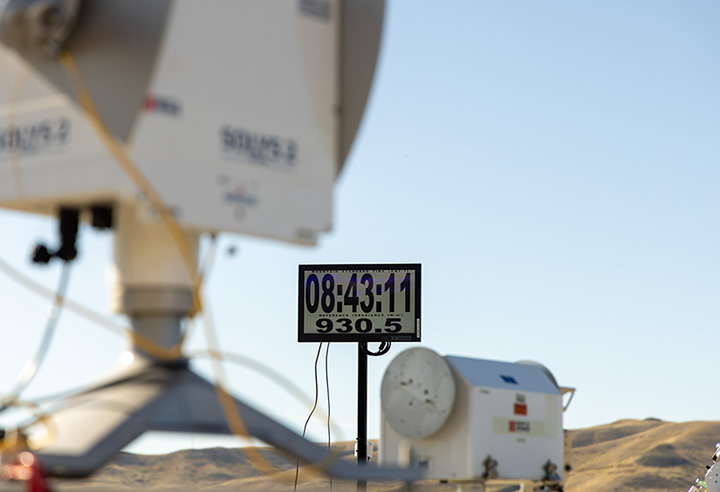
A clock runs one hour behind Mountain Daylight Time to align with solar noon, when the sun is at maximum elevation, keeping participants aware of progression throughout the day. The number below the time indicates the current stable irradiance reading.
What Is It Like Attending NPC?
Affectionately referred to as the “sun nerds convention,” NPC serves as a World Meteorological Organization regional comparison for maintaining traceability, hosting participants who seek compliance with the International Organization for Standardization requirements for interlaboratory calibrations. Participants set up their instruments on the top of South Table Mountain and, beginning at sunrise, they start taking solar irradiance measurements in groups of 49 observations at 30-second intervals.
Researchers at the SRRL analyze the data to provide participants with a ratio of their instrument’s measurement to the NREL reference group that allows them to calibrate their instruments to the World Radiometric Reference. Maintaining this traceability to the world standard allows participants to take their instruments back to their organizations and continue doing the important work of solar resource assessment, climate change studies, and atmospheric research with the assurance that their measurements are aligned with the world standard.
As an example, the U.S. Department of Energy’s (DOE’s) Atmospheric Radiation Measurement (ARM) program personnel James Martin, Jim Stow, and retired Craig Webb participated in this year’s NPC to maintain its traceability of radiometric measurement. This supports the ARM program in closing the gap between the radiative transfer models and solar irradiance measurement.
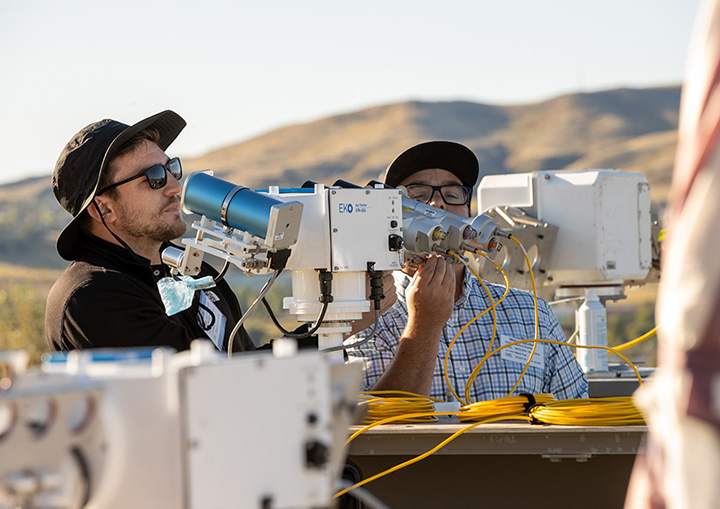
NPC participants set up and validate data collection to verify that solar alignment is not lost during the measurements. They need precise solar alignment to ensure they are measuring the full solar irradiance (i.e., the full power of the sun).
Collaboration at the Event
After attending this event, participants leave with more than just calibrated instruments. Collaboration and networking are an equally important part for this tight-knit industry to share valuable information about their work across all different industries and in different parts of the world.
Logan Soldo, one participant at this year’s event from the National Oceanic and Atmospheric Administration in Boulder, Colorado, commented on the value of the opportunity to collaborate.
“Even just sitting here and learning from all of these people who have been around a lot longer than me is valuable,” Soldo said. "I feel like I’m learning so much.”
Charles Robinson from Sandia National Laboratory remarked on how he is grateful for the mentorship he has received in this field. His mentor was mentored by one of the men who was at the very first international comparisons back in the 1960s, and Robinson was still using one of those original instruments at NREL’s comparisons.
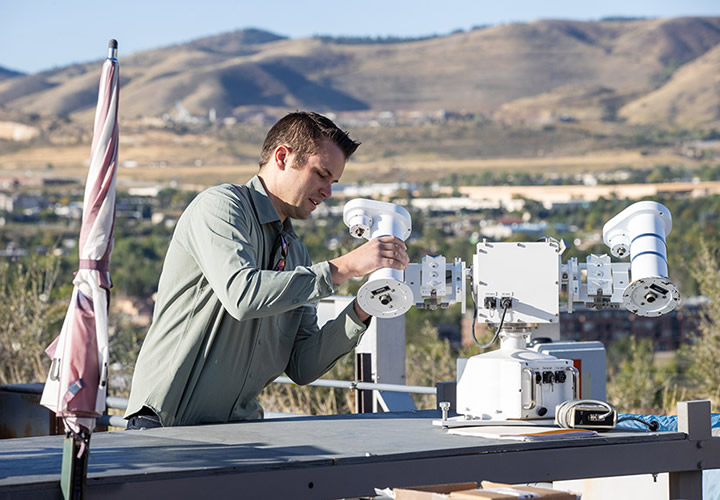
Participants from EKO Instruments attended this year’s NPC. EKO manufactures many of the trackers that NREL uses, which orient the ACR to point directly at the sun.
Tom Kirk of Eppley Laboratories said that he enjoyed the opportunity to be in person with his clients who bought Eppley’s instruments and help them with their instruments in a more hands-on way.
Erik Naranen of ISO-CAL North America, “a proud member of the sun nerds convention,” remarked on the value of being together with others in the industry. Many of the participants remarked similarly on the value of hearing from some of the experts in the field and being grateful for the chance to spend so much time with them to share their passion for accurate solar resource measurement.
Future Directions
The future of metrology is bright because of the work being done by NREL and many others in the field. Their goal is to have the most precise measurements possible to ensure that the research is as sound as possible. Measuring the sun’s power is still a difficult task. But when people know their instruments are sound, they can lay a strong foundation to push the envelope of climate and atmospheric research.
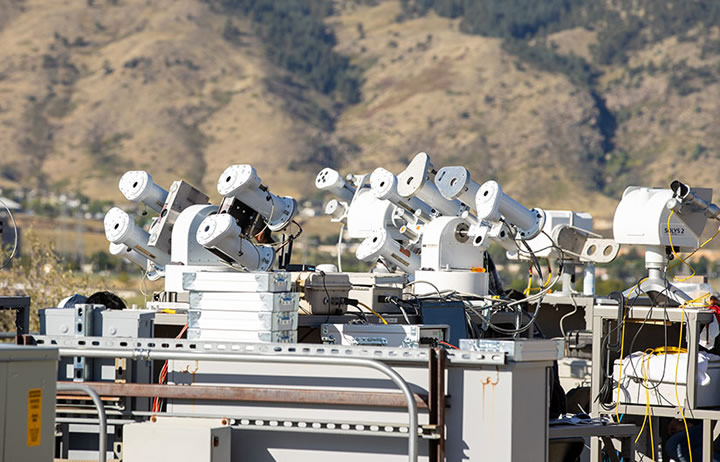
More than a dozen ARCs are lined up on the top of South Table Mountain, making simultaneous solar irradiance measurements with one another.
The logistics associated with NPC require support from NREL’s Environment, Safety, Health, and Quality Office; Site Operations; Office of Security and Emergency Preparedness; Power Systems Engineering Center; Shipping and Receiving; DOE’s Atmospheric Radiation Measurement program; DOE’s Solar Energy Technologies program; and more. Thank you to all the NRELians who pitched in to help advance NREL’s leadership in this area and provide support to an event that improves research outcomes across renewable energy and atmospheric research.
Learn more about NREL’s work in the Solar Radiation Research Laboratory, which includes the Metrology Laboratory. To find out more about attending NREL’s comparisons in 2026 or to learn more about past events, visit NPC’s website.
The content & opinions in this article are the author’s and do not necessarily represent the views of AltEnergyMag
Comments (0)
This post does not have any comments. Be the first to leave a comment below.
Featured Product

